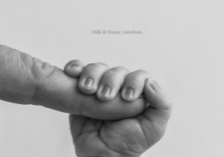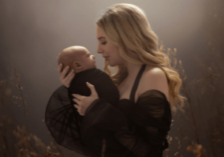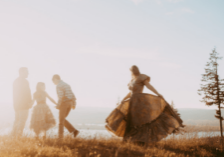Pricing Strategies and Mindset Shifts for a Profitable Photography Business with Jane Goodrich
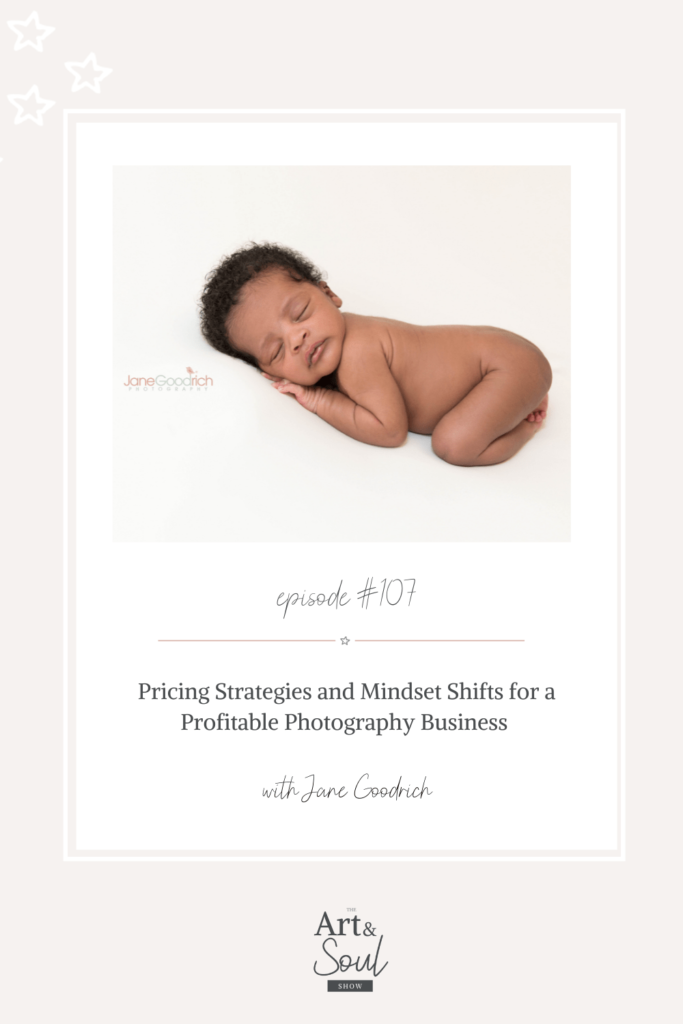
When was the last time you thought about your pricing strategies? Unfortunately, the most common answer I hear is, “Never.”
Many photographers are hesitant to raise their rates, but when you overcome the mindset blocks and give yourself permission to value your time, you’ll be shocked how much your business can grow.
In this episode, I’m chatting with family photographer and Picsello founder Jane Goodrich about mindset shifts photographers can make to embrace profitable pricing strategies and enhance their businesses.
She’s sharing her advice for pricing your services and simplifying your business. Plus, we’re chatting about her new venture, Picsello, an all-in-one software that helps photographers run their businesses and price their services.
What’s in this episode:
- How to see the value in your services and price your work accordingly [4:20]
- The mindset shift photographers must make in order to raise their prices [9:34]
- Why so many photographers undervalue and discount mini sessions [10:54]
- Why you shouldn’t try to compete to box store prices and major studios [16:05]
- How to simplify your marketing and create a brand that works for you [17:56]
- How charging your worth allows you to outsource the tasks you don’t enjoy [19:27]
- Ways you can start treating your work like a true business [21:41]
- How to start setting boundaries, even as a brand new photographer [25:53]
- Jane’s new software, Picsello, for managing your photography business [27:40]
If you’re ready to finally embrace profitable pricing strategies and step into the role of business owner, tune in to this episode.
SUBSCRIBE: iTunes | Spotify | Stitcher
Meet Jane Goodrich
Dedicated, passionate, and goal-driven, Jane Goodrich is an award-winning photographer and leading photography expert whose underlying mission is to both support and empower other photographers in reaching new levels of profitable success. Her most recent project, Picsello, is an all-in-one software for managing your photography clients, pricing your services, and scaling your businesses.
Connect with Jane
Did hearing from Jane encourage you to rethink your pricing strategies? You may also enjoy this episode with Julia Kelleher
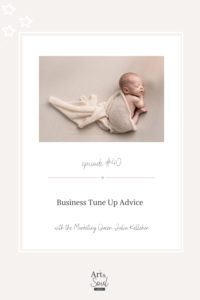
Transcript:
[00:00:00] Jane Goodrich: Probably more for the newer photographers, that isn’t a job, it’s not an easy side gig or side hustle, you know? Yes, actually probably a hustle where you can feel like you’re building up to something, but it definitely isn’t just a job, it’s a business. It’s not going to go away. You have to invest in it, invest in yourself, invest by taking courses, but also invest in your equipment. You know, invest in a backup camera. If you’re a wedding photographer, invest in a decent computer, know that you’re going to have to budget that to replace it every three years. You need the backups. You need memory cards. It’s a business.
[00:00:39] Lisa DiGeso: Welcome to the Art and Soul show where we dove into heart opening chats on photography, business life and that messy in between. I’m your host, Lisa DiGeso, a mom, a photographer and entrepreneur, and I’ll be sharing honest conversations and advice for photographers with insight on mindset, entrepreneurship and creativity. The goal of this podcast is for you to be able to gain insights and strategies that will get you real results. Because let’s face it, having a photography business can be lonely, but it doesn’t have to be. This is the place you can go when you need a boost of encouragement, a kick in the pants and inspiration to pick up your camera. This is the art and soul show. Hello, my friend. Welcome back to the show. Today, I’m chatting with Jane Goodrich dedicated, passionate and goal driven. Jane is an award winning photographer and leading photography expert whose underlying mission is to both support and empower other photographers in reaching new levels of profitable success. A background in business and marketing vast industry experience running two successful photography businesses building the photography business brand, Jane took her knowledge and experience and poured it into Picsello, a platform that will empower photographers to easily manage and market and monetize their business. It launches in January of 2022. I am so excited to dove into this conversation with Jane, so without further ado, let’s get started. Hello, my friends. Welcome back to the show. Today, I’m chatting with Jane Goodrich. Welcome, Jane.
[00:02:16] Jane Goodrich: Thank you, Lisa. Thanks for having me. I’m excited to be here.
[00:02:19] Lisa DiGeso: Share with us who you are and what you’re passionate about.
[00:02:23] Jane Goodrich: Oh wow. Oh well, I’m Jane Goodrich, and I’ve been a full time newborn and family photographer in New York for 12 years now. And more recently, I founded a company called Picsello Photographers. But I just wanted to say that I am a huge fan of yours and I have probably taken all of your courses each year, and that is just so great for keeping current with you. You’ve just got such a great resource for the community. You were online courses before the pandemic, before it was any so. Thank you for that. You. I would say my family is my number one passion. I have a six-year-old daughter who definitely lights up my world and is a blessing. My other passionate passions, apart from photography, of course, I’ve always had this weird obsession with helping other small businesses, not just photographers. I think I’ve, you know, been in chambers. I helped with different, you know, the style guides of our town. I just really think small businesses are just so underserved in society and they do so much work, but for little recognition. And so during COVID, I think the quiet time, because I’m in New York, we were hit. I was like half a mile away from New Rochelle, which was the whole town. So we were hit very badly. You know, we shut down for a long time, but it just sort of gave me the headspace to think about things within our industry and like how to make it sustainable and profitable and the things that were going on that I just didn’t realize. I actually blamed me being busier with doing the minutia stuff on having a kid, which it actually wasn’t because I was still working and she was at home with my husband and it wasn’t her. So, yeah, so that’s kind of what I’m passionate about. Pretty much.
[00:04:18] Lisa DiGeso: I love that. I love that. So I also know that you are passionate about teaching photographers to value themselves. So what steps or advice do you have for someone that might be struggling to find value in their own time?
[00:04:34] Jane Goodrich: How do they value themselves? Well, this is hard actually, especially nowadays for photographers, especially as I try and put myself into a new photographer’s situation. How would I price myself if I was starting my business in 2002? It’s a lot more complicated than when you and I started. It was either in-person or all inclusive. So I was all. I mean, I still have been for 12 years all inclusives. I just created a package that prices digitals because I’m not the best salesperson and I just love the shoots, so I’d rather spend the time photographing. But when now it’s beyond overwhelming with the different pricing models, saturated market, everyone being able to give advice on running their business, you know who you see in groups like who knows if that photographer who said, yeah, charge $500 for all inclusive really knows they’re even their own numbers, never mind your situation. So I think I would definitely give, you know, first of all, to know your numbers. Because you can’t value yourself without, you know, knowing what it takes to become a photographer. Yeah. So for example, it’s really also hard. You’ve got a lot of money mindset blocks, you know, women especially don’t like talking about money and you’re not actually some guys don’t either, but it’s just sort of a taboo thing. So I like to sort of break it down where it’s like, OK, you’re giving up your job as a teacher and you want to be a photographer. So how much money did you make as a teacher and then go from there and work backwards? But if you’re not giving up anything you have to look at, you know, Oh, well, I’d have to hire a babysitter to, you know, mentor one woman. And she’s like, Well, my husband earns the money and I might, but you’re paying your babysitter to work. So actually, you’re losing money, actually. She was definitely losing money. So but she thought she was just doing, you know, making $10000 a year, and she wasn’t. So it’s just being able to take it away from being like, it’s all about me and what I’m priced at, it’s not you. It’s your business, right? And what it takes to run a business. And I think photography looks easy. We all know it’s hard. Well, new photographers don’t know how to know. You don’t know how hard it is for every one hour of a shoot, you would literally have nine hours on the back end. OK, well, then you know that a $100 shoe is going to be divided by 10. You’re making $10 an hour, OK? And then the average profit margin is around 25 percent, even if you don’t have a studio. Not many people knew that, right. So we’ve been doing all this research to just really get those numbers. And that would be you’d be making $2.50 an hour. I noticed it could be seasonal. It could be, you know, you’re not going to get clients for 40 hours a week or that you think you’re going to get. It’s a lot of work. So once you drill down those numbers, people can justify their prices. What I don’t like is like, Oh, you have to value your art and all creativity. What if the clients think that it’s so easy and they don’t know how hard it is and it’s really hard to justify paying them, you know, so it’s definitely just hard for everybody, and I think people have different ways of going around it. But I like to get facts. This is what it is and that helps me justify prices.
[00:08:01] Lisa DiGeso: And I shared this on the podcast before, and what I did not really realize when I was working into my pricing in the beginning was I needed to pay myself for that. Paying myself wasn’t like breaking even on buying newborn outfits and props and blankets like I didn’t realize. Like, I thought I was like, Oh yeah, I’m making money because I have money to spend.
[00:08:26] Jane Goodrich: No, no, it’s not making. Yeah, it’s not making money at all. It’s not making money and is actually quite confusing when you first start out because you’re just like, I don’t think there’s any other industry, and I would love it if anybody found out that is a service and a product. It’s very difficult to price. So it’s also, you know. But then what happens is you just get, you know, with the race to the bottom of like, I’m oh so and so’s better than me. And really, do you know if they’re better than you on a shoe or not? And it’s just stay in your own lane, what’s going to make you money and your family for your decision? You want to do this to spend more time with your kids. But you don’t know the back end work, so you might have made a bad decision if you’re not priced high enough. And also price yourself to outsource those tasks, not just for the shoe. Right. So price yourself to edit if you got sick and you had 50 mini sessions to edit and everyone’s screaming at you for their holiday cards, how much would it cost you to edit them to outsource? That’s it. It’s very simple. It’s just the facts, numbers.
[00:09:34] Lisa DiGeso: So let’s talk about probably photographers’ biggest fear, and that’s raising our prices. So what mindset shift do you think photographers need to make to see that value and to be able to confidently charge and raise their prices while being aware of their numbers they need to make?
[00:09:50] Jane Goodrich: Yes. So if they’re aware of the numbers, one of the mindset shifts is I would highly recommend not raising them in January. I would raise them right before a busy season. I mean, if you are really, really unprofitable, raise them today. But if you raise them during a busy season and you’re, you know, someone says, Oh, you’re too expensive, you’re too expensive, but you are busy anyway, you’re not going to get in it. It takes away that sort of. Oh, the four people that emailed me this week all said I was expensive. But if you’re going for a day and you know one of their books, it definitely helps and also know that you can go back. If you can go back, it’s not permanent. It really isn’t. You can change your prices back, just give it time. And also then just do if you’re. If you’re slow, then work on your marketing or work on your website, you know, it’s a business. It’s not just shooting, it’s like that’s 10 percent of our time. So but that’s just what I would suggest. I don’t think it’s very, very hard. Yeah, I I struggle too.
[00:10:54] Lisa DiGeso: So, yeah, I mean, I as part of the reason I’m taking this time off is to figure out what pricing model I actually want to have because I’ve been an all inclusive for so long and I’m and I enjoy it. But I’m also thinking, well, maybe I could try something new during this time. Maybe, maybe I don’t have to continue running this business this way. So it’s just giving myself that time and space to figure it out. What do you think is fascinating, though? Jane, we are probably the only industry that when we are busy in our busy season, we actually discount our prices and be like we get paid less. Right? Like, can you imagine going to your favorite restaurant and they’ve got a line up around the block and they’re like, Actually, we’re going to do half price dinners because we’ve got such a big lineup. And you’d be like, why? That doesn’t make any sense, like supply demand, right? Yeah. But my industry? I know.
[00:11:42] Jane Goodrich: I don’t. So I have a little weird theory about this being the shift towards mini sessions. And I’m not saying many sessions are, but they can be extremely profitable. I think it’s great. But what happened is the race to the bottom also. Oh, I’m going to do a $150 session, but it’s actually going to be a full session. I’m going to come to your house with a newborn shoe in the middle of October. So I think that one of the things that we as an industry need to educate new photographers are like, if you are, you know, one, you shouldn’t lose money on any shoe. But if you have to be able to make money from mini sessions and we have two mini sessions of back-to-back sessions you pick, you know, very clear on that. And there’s a minimum price for that. And realistically, it’s you know, I’ve been doing so much research and you know, it is an honor and $50 is thicker. You know, when I first started out in 2010, I did a massive competitive analysis and figured out my numbers and everything, and it was around a thousand dollars for an all inclusive newborn and not newborn ship family shoot because you’re giving them the images. There’s nothing like that. And then a mini session should be 60 percent of that. And if you look at the photographers that have been doing mini sessions year after year, their structure, their end price, regardless of whether they sell in-person or all inclusive, is around $600. So it makes I’m like, How can it be lower? Not if you are. It’s been 12 years. Cameras got a tiny bit cheaper, but our job got harder. I, you know, now you have to be a social media queen. So it’s just really, really what’s unfortunate is what people don’t see is they don’t see the people that have given up good jobs, like a teaching job, like one woman I mentor. And actually, it was sort of a real kick started to do with Picsello that just broke my heart. She had given up a really good teaching job. She was like, I’m going to be a photographer. So, you know, she came to me three years later. She had very low prices, and she said, I started this business because I wanted time with my family. I did not spend one weekend with them for three years. And by the way, she didn’t realize because we don’t, it’s hard. She didn’t realize that her husband also has a small business, so their health coverage had to go private, so they were paying $3500 a month for their family. And then, you know, her pricing barrier. So she literally wasted and she made no money those three years with zero profit. So she just and then she couldn’t get her job back and was like, as an industry, we bailed. Somehow, you know, like is like, who is looking out for us? So yeah, and those new photographers, because I really do think that the value needs to be separated from the person. It is a business not, you know, I am not, you know, a $1500 newborn shoot. I’m Jane Goodrich. My business sells $500 newborn shoots. So, but again, money is a whole thing and I’ve listened to you. I know a lot like you when you go on a money block, I’m like, I’m saying, she is amazing. I’m like, I need to sign up for that. Just when I think everybody has a money block, it’s just, you know, how how they are impacting your daily life is how you can’t have it.
[00:15:13] Lisa DiGeso: A huge wake up call for me was, I don’t know if you’ve been to Mexico, but we like to go to the all inclusive and there’s always the people around there like, let me take your family photo. And so we did. We ended up doing this family photo shoot, and then we went in to pick them, and I was like, it was going to be like eight hundred dollars. And they were like, Yeah, that’s just what it cost. If you want these memories to take with you, this is what it’s going to be. And I was like, Holy Quran, this isn’t even good photography you’d like not to not like, I’m sure these amazing, amazing, all inclusive photographers, but this experience, they were not. And that was OK because I just wanted the memories of my husband and my son on the beach with me. And so I paid for it. And yet, like I, that was a number that I was struggling with. Did you even charge for my work? And I gave so much more and I was like, Holy Crumley. So like–
[00:16:05] Jane Goodrich: Yeah, I think one of them. Somebody had mentioned, I can’t remember where I heard it, and they were saying they were trying to compare themselves pricing to JCPenney or one of the big box stores. And I was like, But you don’t understand those places. They upsell. But B, that’s actually called a loss leader, loss leader. They are doing that cheap price to get you into buying that TV or the clothes so you can’t compete. Plus, eating in remotely competes with those types of places because they’re doing volume. And, you know, so it’s one of those things where you can’t compare to those. And if somebody can only afford J.C. Penney prices, they should go to J.C. Penney, you know, all in the Oh, I want everybody to afford it. What do you do? They go to their boss and say, Oh, I, you know, I want you to be able to afford me. You know, they’ve got income coming in. They’ve got expenses. It’s okay to do charity work, but find something that you’re passionate about. I don’t advertise. I do lots of charity work, but I do it with the charities that I know will benefit or close to my heart. But does it mean that I’m a charity? You know, like this doesn’t mean I buy you my clients as charities.
[00:17:24] Lisa DiGeso: Yeah, I don’t. I think that’s one thing that you hear quite often is photographers will say, I can’t afford me. I wouldn’t be able to afford my prices. And the thing is like, we aren’t our own target market, though. You don’t have to be.
[00:17:36] Jane Goodrich: Now, because we’re photographers. So yeah, and yeah, and running. And the thing about it is, wouldn’t it be nice if we could afford ourselves? And you know why we can’t afford ourselves? Because I think, well, you’re right. So the reason why we can’t pay our prices is because we’re not charging enough. Yeah, we were in this prison coup.
[00:17:56] Lisa DiGeso: Yes. Yeah. Yeah. It’s so true. It’s so true. I love that. So true. So let’s switch gears and talk a little bit about marketing. And I think what do you feel is one of the biggest barriers to photographers and marketing themselves and how they can get over it?
[00:18:12] Jane Goodrich: Well, I still struggle with this one. So I tell myself this well, one, it’s overwhelming right now. When I first started, it was, you know, updating your website, you know, you do some emails and then talk to your community. And now it’s every single social media channel known to mankind. I think I would say once again, take it yourself out of there. If you struggle with self-promotion again, if you can say it’s not me, it’s my business, it’s Jean Goodrich Photography or, you know, so it’s like, and if you really don’t like your name being you, if you really struggle with that, then come up with a name that’s like, I don’t know, I love it. One in our community called little whimsy photography. She’s great. And, you know, probably I mean, it’s a great name, but it might help her be able to promote it. So that and also pick one, but pick one channel that you’re going to be really focused on and start with that. Say you love Instagram and you’re great on Reels will start with that. But you know, if you’re great on Twitter, it might not make the most sense for your business. So figure out what it is, but definitely take classes to understand it so you’re not offending the audience that you’re in. Or really? And also outsource if you don’t like it. Outsource. Pay to outsource. Charge your worth, and pay to outsource. And also even advertise to, you know, learn about Facebook Advertisement or Google Ads.
[00:19:39] Lisa DiGeso: Mm-Hmm. And it’s always changing, and that’s about everything. And it’s like just just keep on the pulse of it really learning and keep on the pulse of it.
[00:19:47] Jane Goodrich: And if you can like – so for me, I ended up learning a lot about SEO and then it’s very hard. It’s just really time consuming. And so and then I learned something else and I did something wrong for my SEO. And so now I just outsource that and I’m like, You take care of it because I don’t know what I’m doing and I’ll mess it up.
[00:20:08] Lisa DiGeso: Which this is going to sound terrible. But what I have done with my photography business is I have honed in and focused on my customer service and just like loving all my clients. So word of mouth has been my number one form of average like I haven’t advertised probably in eight years, and it’s just 100 percent word of mouth social media tags, word of mouth and like, I’m like, Cuz I don’t get SEO and I probably never will. So I’m just –
[00:20:36] Jane Goodrich: Yeah, I mean, I say that. I pay for it now, I actually don’t because I don’t actually care where I rank in the, you know, Google because it’s to some other photographer that actually updates that website that has been updated in four years. But you’re right, I think you also have to realize that it’s like the first three years or an investment in advertising. Is it getting those clients if you just build your client base? I mean, I’ve been booked since 2016 for fall with my repeat clients. I just blocked it off because the first year that I did with my daughter, it was so much harder to get new clients on their shoes. They were, you know, versus seeing these kids again. Now, one that I photographed last year and they’re like, so cute. And you know, so in my mindset, when I’m busy, I made the decision that I’m only going to have repeat clients. Plus, I was getting so busy that I was annoying my clients by not being able to get on my calendar. So I just was like, if you’re a repeat client, you get on. Otherwise, see you in February, and I have heard people say that.
[00:21:37] Lisa DiGeso: Yeah, OK, yeah, that’s OK. That’s a great way to be. So what do you wish more photographers knew?
[00:21:44] Jane Goodrich: I think I wish. I think it is. The number one thing is like, it’s probably more for the newer photographers that it isn’t a job. It’s not an easy side gig or side hustle, you know? Yes, actually, my probably a hustle where you can feel like you’re building up to something, but it definitely isn’t just a job. It’s a business. It’s not going to go away. You have to invest in it, invest in yourself. Best by taking courses, especially the Milky Way, because we love them. And then, you know, but also invest in your equipment, you know, invest in a backup camera. If you’re a wedding photographer, invest in a decent computer, know that you’re going to have to budget that to replace it every three years. You need the backups, you need memory cards. It’s a business. So I just would. That’s the number. One thing is do not either. And what I think is to do with the pricing, I’m not sure, but the more and more I’m seeing is, oh, my memory card failed or I’ve done this or I’ve done that on my computer died and this and it’s just like, we’re getting a really bad reputation within the general public because if someone’s white, you know, wedding accidents do happen, I get it. But I’m just seeing a lot more and more because people aren’t pricing themselves to be able to buy 15 memory cards on a Black Friday sale like I do. You know, just because I do and I throw them out. Me too.
[00:23:03] Lisa DiGeso: So it seems like, OK, if I can’t trust you, you’re gone. Good bye.
[00:23:08] Jane Goodrich: And I think that yeah, yeah, they do that like a little red blinking dot. Well, it takes that second longer. I’m like, See, like, yeah, goodbye. Yeah. You know, actually,
[00:23:16] Lisa DiGeso: I recently updated my camera from a Nikon D5 to mirrorless, not realizing that it no longer has the C.F. card slots. It’s the SD. So, oh yes, I have 75 CF cards. And yeah, so I just had to update and I actually found some 128 gig ones that I got for 30 bucks each. So I was really excited and like from London drugs, though, like not from Amazon or anything like that. So like, I can trust them.
[00:23:47] Jane Goodrich: Yeah, no.
[00:23:47] Lisa DiGeso: But oh my gosh, like that was one expense I was not expecting when I updated my camera. But having backup cards and having this system like this card does not get that. We get my cards, get backed up three times and then not deleted until that session is fully edited and delivered to a client. Like there’s no way it’s getting lost.
[00:24:07] Jane Goodrich: No way. Right? Yeah. So you have to have a system in place and there are different methodologies, and I think people find out what their mind is like. I literally have to go after the shoot into my computer, download them, see them all, export them to Dropbox and then also save them onto my server. And then I’m like, OK, now I can go, you know, go home or do some more work. But like, I can breathe. People are like, Why are you leaving? So I got to download these images.
[00:24:36] Lisa DiGeso: So what’s even worse? I’m probably a hoarder, actually. I mean, I actually have never deleted a photo I’ve ever taken, like the raw files, like the one I still have. I think I have 45 external hard drives. Like at this point, it’s ridiculous.
[00:24:52] Jane Goodrich: I’ve never deleted those. I think they’re my babies. But also, I say, when something happens to somebody that, you know, they didn’t have the full, all the images, even the eyes closed images and, you know, pass away, you know, like it was made. Unfortunately, I’ve had to do it three times and I’ve gone through my rolls and been able to give them all the images as a gift for their loss. So it’s just, yeah, for me, it makes me feel better. I also have the rules when I see someone like they lost the computer and they download the app back in the day and get a CD and they couldn’t find us. And she’s like, Can I please have my newborn images from 2011? And I went back and I saw the gallery and I was like, Oh, these are getting re-edited.
[00:25:37] Lisa DiGeso: You’re like, Wow, wow. Luckily, I feel like a mom, bless him for hiring me.
[00:25:46] Jane Goodrich: Hey, you –
[00:25:47] Lisa DiGeso: I know, hindsight is 20/20.
[00:25:50] Jane Goodrich: Yes. Yes.
[00:25:53] Lisa DiGeso: Yeah. So what challenges have you faced as a photography business owner, both personally and professionally? That has helped you create a business that really aligns with you.
[00:26:03] Jane Goodrich: So both personally and professionally, the professionally is more than, you know, the fact that it hasn’t gotten easier. So, you know, that’s just why I decided to create Picsello. But that’s but personally, I would say finding a new photographer to set boundaries. Like, I don’t know why it took COVID to say, I am not going into your house anymore. I really don’t know. I have a beautiful studio. They’re gorgeous. I don’t know why. I just couldn’t say no. And I should just say no. And then I ended up trying to price people out of it and they still wouldn’t make it. They still like, you come to my house and today someone had to shoot and then one in the home and I said, Nope, I’m not going to your home. So I definitely will lock in the fact that you started it right away, right? And you had. Yeah, I’m never going to know. But. And so I think it’s more to do with figuring out that it is your time and because we end up working around other people’s schedules and everything like that. And you’re like, you know, clients always going to ask for a July 4th weekend, you know, but if you have plans with your family, that family comes first or whatever, you may not have a family. You might just want to travel that weekend. It’s not the be all and end all if you turn down a shot, that might not be right for you. So I wish I’d have said, but now I feel like I joke and I call it COVID confidence, so I’m like, Nope, not doing that, not shooting on a weekend and not doing that.
[00:27:36] Lisa DiGeso: So I love that. I love that kind of confidence. That’s cute. So you recently launched something for a photographer called Picsello. Can you share about this?
[00:27:46] Jane Goodrich: I can. So yeah, it was a brainchild. And in fact, it’s interesting because as we’re recording this, they literally just sent the app as a live kind of thing, and I was like, I’m going to go test it after this cause. I’m very excited. So one of the things that as I was sitting by going through all my bills and everything like that during COVID, it was sort of eye-opening and I was doing a lot of work that I shouldn’t have been doing and some of the softwares is using. They were great at certain things, but then I was like, Well, why would they do that for us instead of this, you know? So I set out to be like, How can we create a software solution that also is able to really help the newest photographers? And actually, it’s going to help more than the new photographers. But like really, we aren’t in the photography industry, we don’t have, you know, if you’re a hairdresser, you go to school, you get a license, you follow. You know, you shadowed someone on what they call that?
[00:28:51] Lisa DiGeso: Mentors? Yeah.
[00:28:52] Jane Goodrich: Yeah. So like, it’s sort of innate. And so then they’re learning on the job, the pricing and the methodology and everything like that. So while I was trying to think of it because I actually became jealous of the hair care industry and kind of how you on an industry wide level have training for COVID, it contracts for your clients like massage industry, industry wide, whether or not you were selling Redken or not or whoever it was. And I was like, We need that for photographers. We need someone to be like, You know what? By the way, where are our photographers, what do you vaccinate for or against? It’s not my business, but like, where are we on the list? You know, for example, our clients can’t wear masks. We are high risk. Can you please like and get non-answers from some of these associations? So, you know, and in the U.S., it’s very state dependent. And I just thought by going, we have a couple of associations that literally have government arms trying to deal with copyright law that aren’t doing anything at the moment. Can’t you help photographers? So not that we’re going to recreate that, but it’s sort of like just really eye-opening that we just really needed, like a bigger voice. And so anyway, so that happened to become like a software platform. And but we really want to make it easy. I have issues with software, which is really quite hysterical right now because everyone’s like, we’re using so many different software tools to develop software. And I was like, I started this to stop all this software. You know, the getting me on Slack and all these things, I’m like, You know what I’m doing, but I just want to be able to, like, set it and forget it almost being like. You know, I don’t. And I think that’s why I think it will appeal to the newer photographers because, you know, there’s some great softwares out there that is tailored. And you know, I know photographers love to be able to customize every tiny little bit, and they’re really good at coding. And I’m like, Well, there are a lot of photographers that just like being able to just set it and forget it. So yeah, this is pretty much from start to finish. It’s an all in one. So your CRM and when your photographer were even based on all of the calculations, your pricing packages will be based on your cost of doing business because we’ve already figured it out will be based on where you live, what type of photography you are. These are going to be your average prices and low, medium, high and whether or not you decide to just do session fee and extra packages, that’s up to you. But like you will know that that’s what the price should be. Yeah, within reason, you know, we’ll have customer support being able to help people being like, why we figured this out and they can edit it if they decide they don’t want to, you know, want to sell it for twenty five dollars a can for emails and then also galleries. I really like my software that I use currently, if I have to do an album, it’s just basically all offline and I just wanted somewhere where my clients can order the albums. I don’t care what you do because they’re ordering them anyway. Yeah, right? They’re ordering them through and they’re awful quality. They’re ordering the greeting cards. Lord knows how much I’ve given. Probably a thousand babies, you know, two tiny prints, tiny prints used to give us an associate. So now I just want photographers to be able to make that money back. Easy way for new clients to order the stuff through us. So but anyway, yeah, so just to make it easy, very easy, easy for digital upselling too. So that, yeah, that’s awesome.
[00:32:24] Lisa DiGeso: What will definitely include a link in the show notes for our listeners so they can go check it out. Yeah, thanks. Are you ready for a lightning round?
[00:32:34] Jane Goodrich: I am ready.
[00:32:36] Lisa DiGeso: OK. Coffee or tea?
[00:32:38] Jane Goodrich: Tea 100 percent. I’m originally from England, so –
[00:32:41] Lisa DiGeso: I love it. Herbal or caffeinated?
[00:32:45] Jane Goodrich: You know, so I have to start. I’m weird. I do caffeinated cups in the morning and then I switch to decaf and his English breakfast with milk.
[00:32:52] Lisa DiGeso: Oh, nice. Yeah, pretty much the most luxurious vacation you’ve ever been on?
[00:32:57] Jane Goodrich: What’s a vacation? But I was such a long time Carnival member. Well, I was I. I honestly, I can’t even think of luxury because I’m from England, but I live in America, so a lot of my travel is to go back and forth to England, and I haven’t been in such a long time, so I’m going home this year and so very excited. I’m going to go visit my hometown. It’s not luxurious, but I’ll get fish and chips and Yorkshire puddings, so –
[00:33:27] Lisa DiGeso: I love that. What was your favorite TV show as a kid?
[00:33:31] Jane Goodrich: It’s kind of, you know, not dating myself, but growing up in England. I think at that time we had like four channels, so we didn’t have many great TV shows to choose from. Now we have, you know, but I actually liked cheers as a kid. Cheers. Cheers. It was on a Friday night at nine o’clock or something, and I just loved it. I thought it was the best show ever. I still like it.
[00:33:53] Lisa DiGeso: Yeah, I got it going to pull that one on Netflix if they’re still there.
[00:33:57] Jane Goodrich: That’s a good idea. That’s a good binge watch while you’re at it.
[00:34:03] Lisa DiGeso: Morning person or night owl?
[00:34:05] Jane Goodrich: Morning. Morning, morning, morning. And I’ve enjoyed quite a few night owls. I will say.
[00:34:13] Lisa DiGeso: The craziest thing on your bucket list?
[00:34:15] Jane Goodrich: Craziest thing on my bucket list. I’m not that much of a crazy person, I would say. Probably the craziest thing. I really do want to have a Volkswagen bug bus and drive around to all of the national parks. Or that’s when I think I’m, you know, being fancy. But then I’d actually like to go to all of the baseball stadiums because I do love baseball. And then that would be fun. One summer, I love kind of crazy, is it?
[00:34:43] Lisa DiGeso: That’s fun. That’s a good one. I know my craziest yet. I’m still working on it. Yeah. What’s for dinner tonight?
[00:34:50] Jane Goodrich: I don’t know. I’m the worst about dinner, I am the worst. In fact, actually, I do know there’s a meal service. It’s amazing called Cook Unity. That’s actually going national. It’s so good. It’s like a chef preparing meals. So I’ll probably have one of those like this. They have like, you know, grilled pork chops and stuff, you know, especially right now when we’re really, really busy, I just don’t have time to think. So I like to take the guesswork out of everything, but usually I could eat pizza every day of the week, which is really bad.
[00:35:21] Lisa DiGeso: But no, I love it. I love pizza, too.
[00:35:25] Jane Goodrich: So maybe I’m going to have pizza. Same pizza, I know.
[00:35:32] Lisa DiGeso: So I love to end my interviews with this last question, and it is what are you currently? Curious about or artistically curious about.
[00:35:41] Jane Goodrich: Well, both, I don’t know, actually artistically, my daughter became obsessed with Harry Potter lately. And her name is Emma, so she loves Hermione. So I think I’m artistic, I want to figure out how to do the light painting with the one. Yes, they’re just to figure out how I could do that. Like to just really challenge myself each year with a picture, a portrait of her as some famous person doing it. Yeah. And then other things. I’m a little obsessed with how women can actually break their money. And that’s why I was thinking about Denise. Like, how can they break money blocks? Oh yeah. That stemmed from generational cultural things. And how, as a society can we help it or can we just not for right now or like, how can we help our kids? I don’t know. You know, fascinating about that.
[00:36:35] Lisa DiGeso: Love it. Well, Jane, thank you so much for joining me today.
[00:36:38] Jane Goodrich: Thank you for having me. It’s been great. I’m like a celebrity. I feel like I’ve made my day.
[00:36:47] Lisa DiGeso: You know?
[00:36:48] Jane Goodrich: Yeah, it’s great. Thanks so much.
[00:36:51] Lisa DiGeso: Oh my friends, that was such a fantastic conversation. And I love Jean’s reframe on It’s not me. It’s my business. There’s so many times where I have kind of lost my identity in my business, too. And I think just coming up for air and just realizing our value isn’t as a business owner, it’s as a human. So that’s my gentle reminder to you today. I’m sending you so much of my light and love today and every day. We’ll see you next time.
share the love
[Sassy_Social_Share]
recent
Podcasts
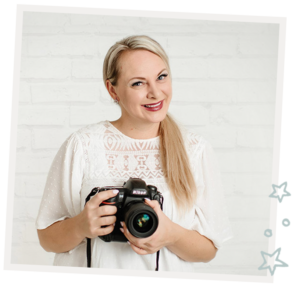
I'm
Lisa DiGeso
I’m on a mission to create uplifting online experiences for photographers ready to elevate their art, their business and their mindset.(...and have fun along the way!)
















